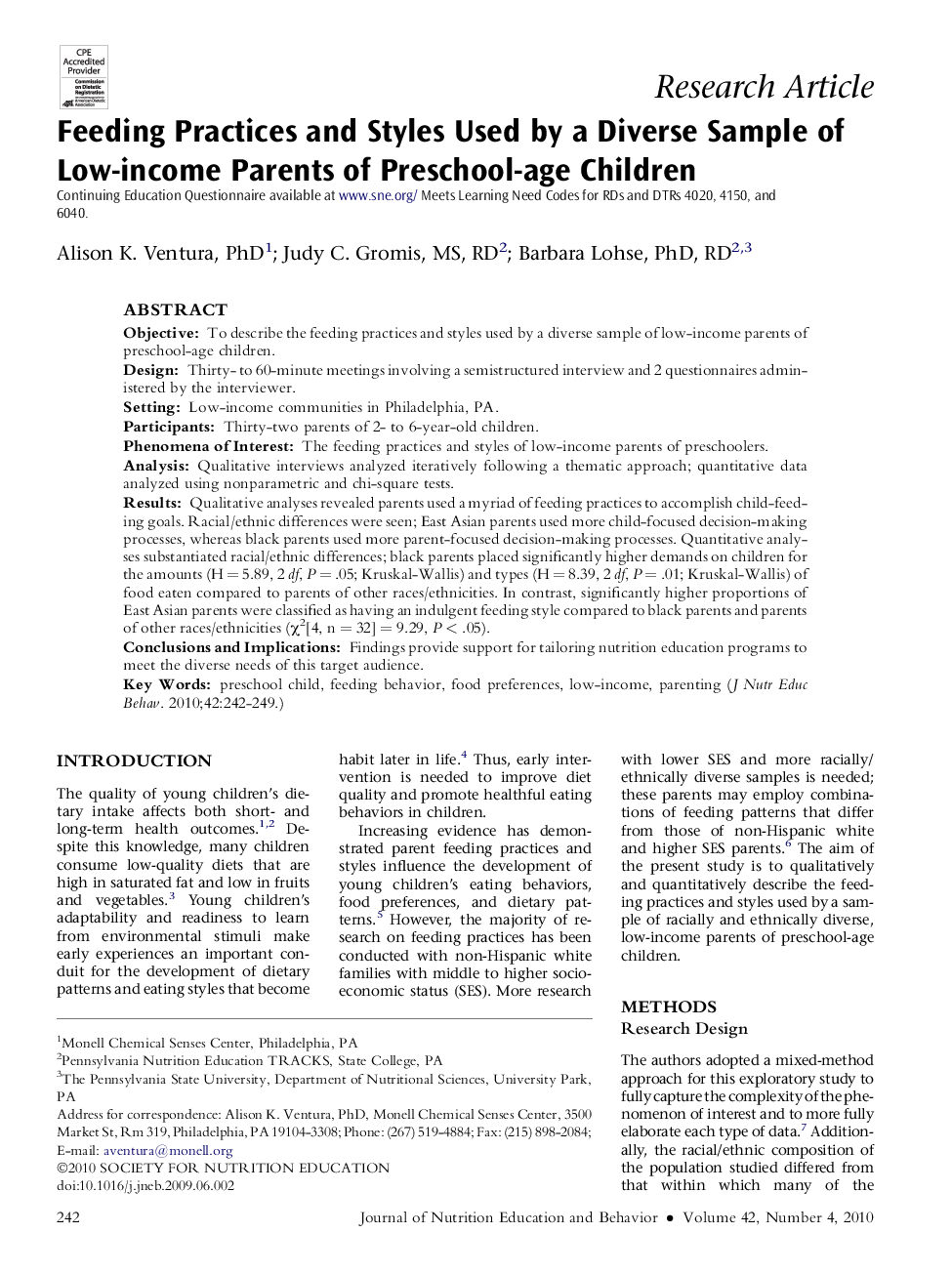| Article ID | Journal | Published Year | Pages | File Type |
|---|---|---|---|---|
| 361955 | Journal of Nutrition Education and Behavior | 2010 | 8 Pages |
ObjectiveTo describe the feeding practices and styles used by a diverse sample of low-income parents of preschool-age children.DesignThirty- to 60-minute meetings involving a semistructured interview and 2 questionnaires administered by the interviewer.SettingLow-income communities in Philadelphia, PA.ParticipantsThirty-two parents of 2- to 6-year-old children.Phenomena of InterestThe feeding practices and styles of low-income parents of preschoolers.AnalysisQualitative interviews analyzed iteratively following a thematic approach; quantitative data analyzed using nonparametric and chi-square tests.ResultsQualitative analyses revealed parents used a myriad of feeding practices to accomplish child-feeding goals. Racial/ethnic differences were seen; East Asian parents used more child-focused decision-making processes, whereas black parents used more parent-focused decision-making processes. Quantitative analyses substantiated racial/ethnic differences; black parents placed significantly higher demands on children for the amounts (H = 5.89, 2 df, P = .05; Kruskal-Wallis) and types (H = 8.39, 2 df, P = .01; Kruskal-Wallis) of food eaten compared to parents of other races/ethnicities. In contrast, significantly higher proportions of East Asian parents were classified as having an indulgent feeding style compared to black parents and parents of other races/ethnicities (χ2[4, n = 32] = 9.29, P < .05).Conclusions and ImplicationsFindings provide support for tailoring nutrition education programs to meet the diverse needs of this target audience.
